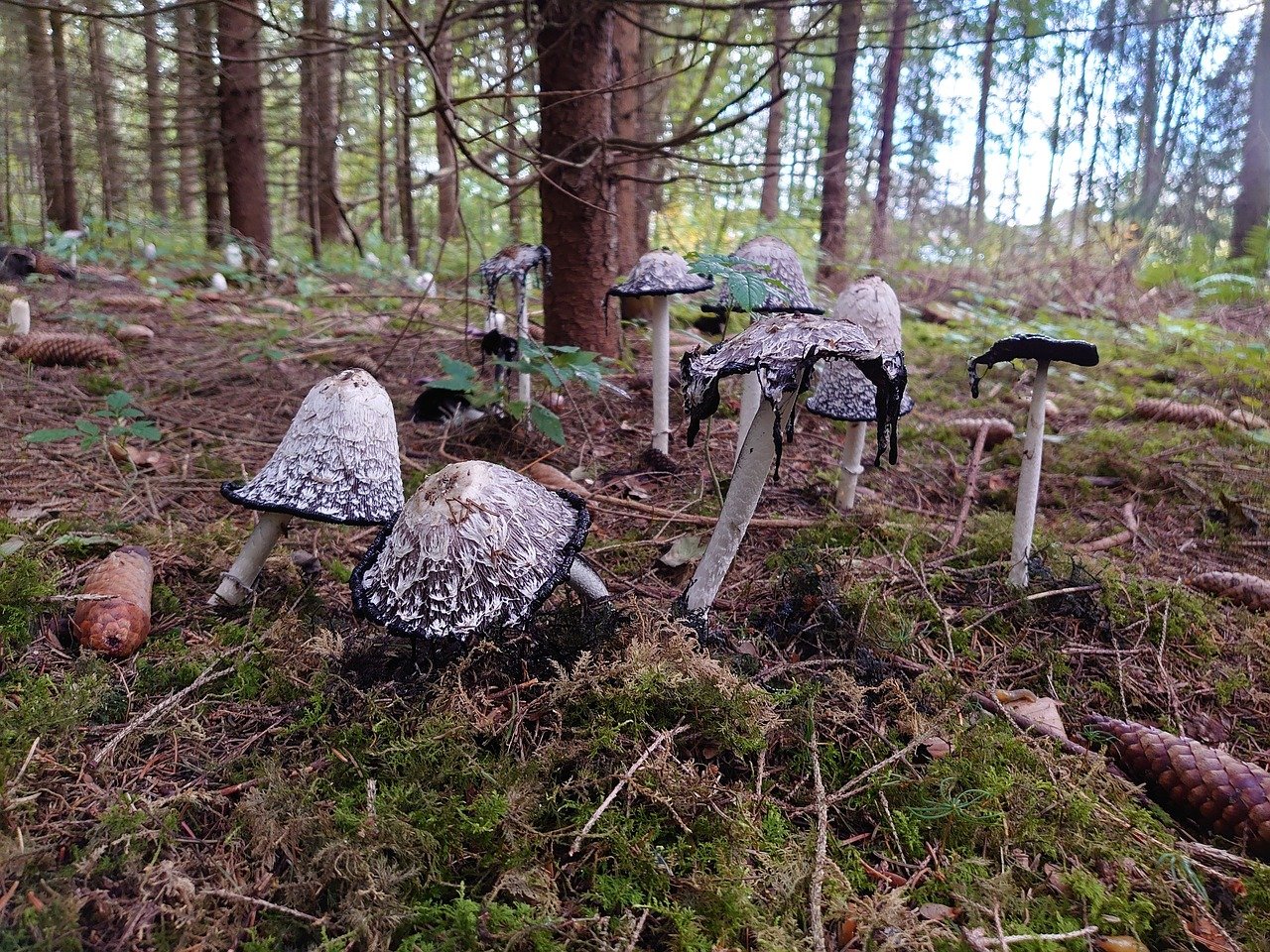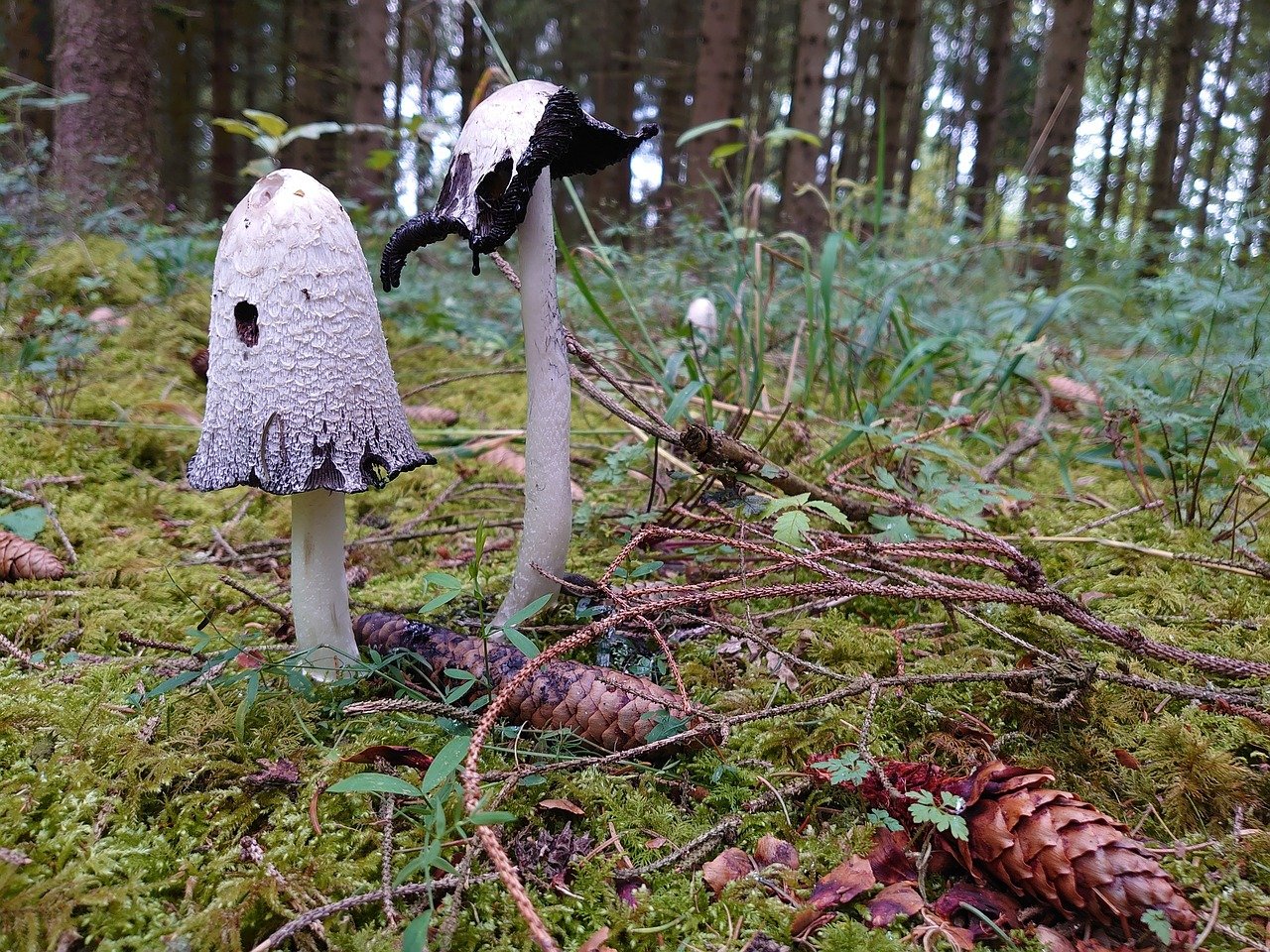Have you ever wondered if nature harbors secrets for our health right under our feet? One such unassuming treasure might just be dwelling among the towering trees and fallen branches in the form of a fungus known as Polyporus squamosus. This intriguing mushroom, often found dangling from tree trunks or peeking from decomposing logs, holds a variety of potential medicinal benefits that have intrigued researchers and health enthusiasts alike. Let’s embark on a journey to unravel how this humble fungus could contribute to health and wellness in ways you might not expect.
What is Polyporus Squamosus?
Before plunging into the potential benefits, understanding what Polyporus squamosus is might help you appreciate its potential impact. Commonly known as “Dryad’s Saddle” due to its distinctive appearance, this mushroom typically appears in woodland areas, flourishing on the dead or decaying wood of deciduous trees. With its large, shelf-life shape and scaly surface, it indeed resembles a saddle, making it quite a visual spectacle in the natural world.
Identification Characteristics
Recognizing Polyporus squamosus involves no small measure of foraging skills. However, you can identify it by its unique features: a brown cap adorned with dark, scale-like markings and a whitish spore print. Beneath its cap, you’ll find a network of pores instead of the typical mushroom gills, adding to its distinctness.
Cultivation and Natural Habitat
Growing predominantly in temperate regions during the spring and autumn months, Polyporus squamosus prefers the rough bark of trees like maples, elms, and willows. For cultivation, certain environmental controls akin to its natural habitat need to be simulated — moisture and adequate airflow, among other factors, making it somewhat challenging yet rewarding to grow.

Historical Use of Polyporus Squamosus
Long before the era of modern pharmaceuticals, Polyporus squamosus secured its place in traditional medicine. Historical documents highlight its use across various cultures, serving not only as a dietary addition but also as a remedy.
Traditional Medicine
In European herbal medicine, Polyporus squamosus was reputed for its diuretic properties, often employed to facilitate urine production and, consequently, detoxification. Furthermore, its reputation as an aid for digestive complaints indicates its longstanding presence in traditional therapeutic practices.
Nutritional Value
The nutritional profile of Polyporus squamosus is also notable. With a composition rich in protein and low in fat, it offers a sustenance option that is both nutritious and beneficial for those adhering to specific dietary regimens. Its diverse composition includes essential vitamins and minerals, albeit in moderate amounts, contributing to its role in a balanced diet.

Medicinal Benefits of Polyporus Squamosus
In scientific contexts, the investigation into the numerous health benefits of Polyporus squamosus is ongoing, continually uncovering potential therapeutic applications. Let’s delve into some of the prospects and considerations of incorporating this fungus into health regimens.
Antioxidant Properties
One of the notable attributes of Polyporus squamosus is its antioxidant capacity. Antioxidants are crucial in neutralizing the harmful free radicals in your body, potentially slowing down the aging process and providing a shield against various degenerative diseases. The presence of compounds such as phenols and flavonoids in the mushroom contributes to this beneficial property.
Immunomodulatory Effects
Your immune system is your body’s defense against various pathogens. The polysaccharides present in Polyporus squamosus may offer immunomodulatory effects, potentially supporting immune function and shielding against attacks by harmful microorganisms. These effects are of particular interest in developing supportive therapies for immune-related conditions.
| Benefit | Description |
|---|---|
| Antioxidant | Neutralizes harmful free radicals, potentially reducing aging and disease risk. |
| Immunomodulatory | Supports immune function and helps protect against pathogens. |
Potential Anti-Inflammatory Benefits
Chronic inflammation is a silent contributor to many health issues, from heart disease to arthritis. Preliminary studies suggest that components found in Polyporus squamosus may have anti-inflammatory effects, potentially reducing inflammation and promoting health.
Antimicrobial Properties
Emerging research points toward the antimicrobial properties of Polyporus squamosus, which could play a role in managing infections. These properties might make it a promising candidate for developing natural treatments against certain bacterial or fungal infections.
Supporting Kidney Health
Traditional uses suggest that Polyporus squamosus might support kidney function due to its diuretic properties. It could potentially aid in promoting efficient kidney filtration, thereby supporting overall renal health.
Diuretic Effects
Historically, Polyporus squamosus has been used to promote urine production. This diuretic effect is beneficial for detoxifying the body and maintaining fluid balance, which can serve as a supportive therapy in certain conditions such as edema.

Practical Considerations and Usage
If you’re considering incorporating Polyporus squamosus into your health routine, it’s wise to be informed about methods of consumption, safety considerations, and possible interactions.
Consumption Methods
While Polyporus squamosus can be foraged or cultivated, consuming it safely involves proper preparation. Typically, young mushrooms are preferred for culinary use due to their tenderness, whereas older specimens tend to be tougher. You might sauté it or incorporate it into soups and stews, complementing diverse flavors due to its mild taste.
Supplements and Extracts
For those less inclined to spend time foraging or cooking, supplements and extracts provide a convenient alternative. Available in powder or capsule form, these products offer a concentrated dose of the mushroom’s beneficial compounds.
Safety and Precautions
Despite its benefits, proceeding with caution is always prudent. As with any supplement or natural remedy, consult your healthcare provider, especially if you have underlying health conditions or are concurrently taking medication. Allergies or adverse reactions, though uncommon, should not be disregarded.
Potential Interactions
Being aware of potential interactions is crucial, especially if you’re using other diuretics or immune-modulating drugs. Polyporus squamosus might amplify their effects, possibly leading to complications if not monitored.

Current Research and Future Directions
While traditional uses of Polyporus squamosus are well-documented, contemporary science continues to explore its potential. Research is ongoing to investigate its comprehensive chemical makeup and how it might influence health on a molecular level.
Recent Studies
Recent studies are delving into the potential cancer-fighting properties of Polyporus squamosus, examining how its unique compounds might inhibit tumor growth. Additionally, scientists are investigating its utility in managing metabolic disorders, such as diabetes, by assessing its effects on glucose metabolism.
Challenges in Research
Research into Polyporus squamosus also faces challenges. Variability in mushroom bioactive compound concentration, due to differences in growing environments, poses a substantial hurdle. Ensuring consistency is vital in pushing it from a complementary therapy to a mainstream therapeutic agent.
Looking Ahead
The horizon looks promising for Polyporus squamosus. As we deepen our understanding, the possibility of integrated medicinal uses grows, potentially leading to new, nature-inspired treatments for various health concerns.

Conclusion
While Polyporus squamosus may not appear as illustrious as some other herbal remedies on the market, its steady place in both traditional and emerging medicinal use speaks volumes about its potential. Whether you’re contemplating it for its diuretic properties, immune support, or simply as a nutritional inclusion, there’s no doubt that this quaint fungus deserves a spot in the realm of natural healing. Nature, it seems, holds more answers than we may often appreciate, reminding us of the importance of looking closer and valuing the potential in the ordinary. While science continues to shed light on its benefits, using it wisely and in consultation with healthcare experts could surely enrich your health journey.
